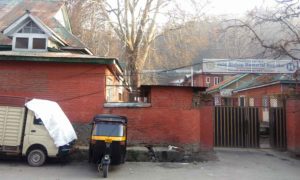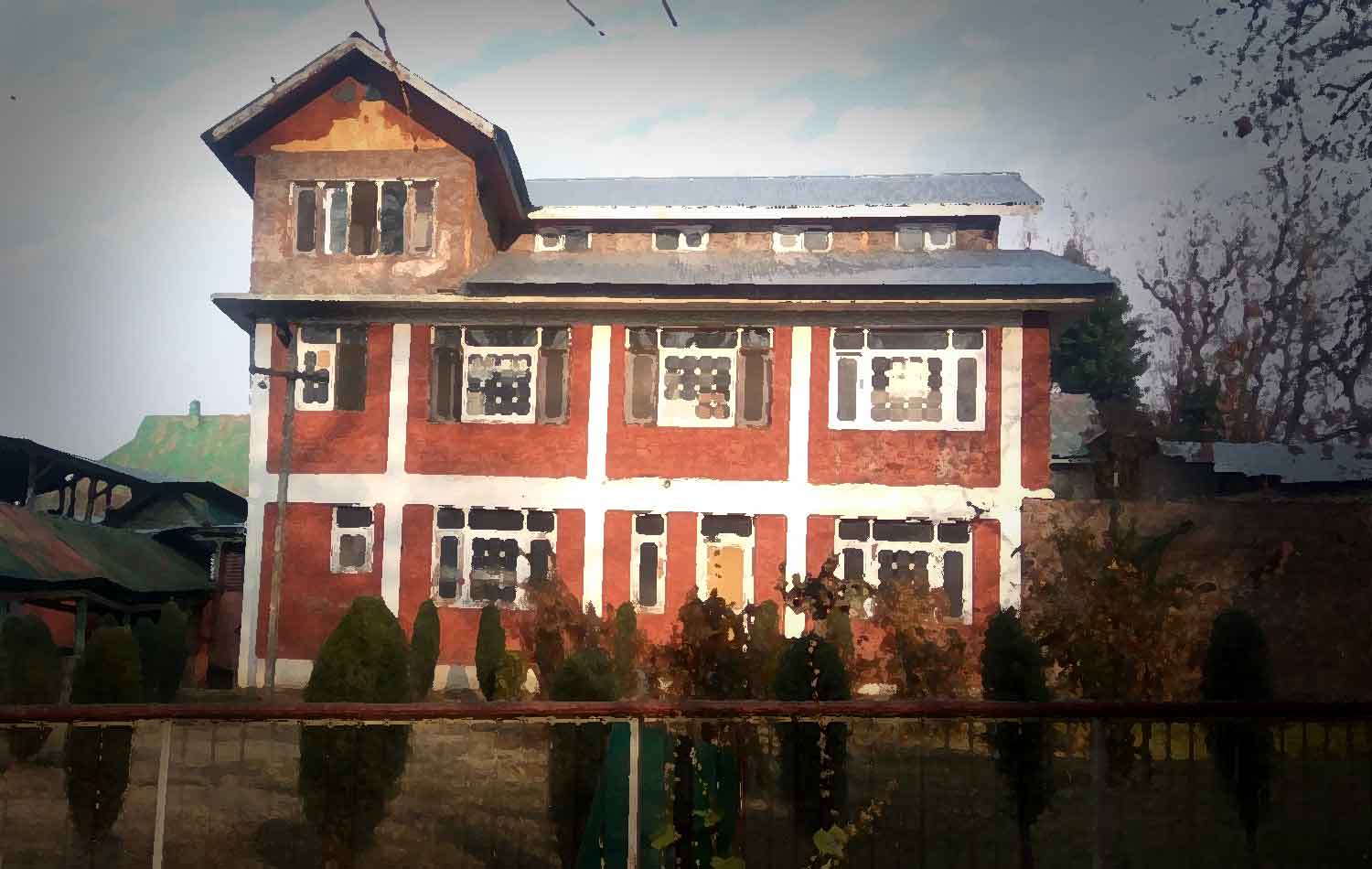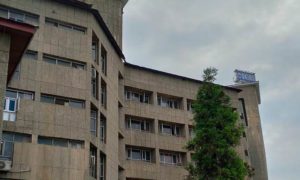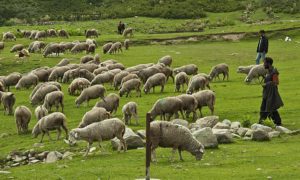Among the legacies that foreign missionaries left in Kashmir is the splendid and historic hospital complex located in the Sarnal area of Kashmir’s Islamabad district. Besides being a distinguished health centre, the hospital is a piece of heritage and history.
In 1902, when people were still relying on traditional form of treatment, John Bishop Memorial (JBM) Hospital became the first modern day hospital in Kashmir’s Islamabad district. As a Gynecology and Maternity infirmary, it instantly made an emotional bond with the locals.
The hospital derived its name from a wealthy Scottish man John Bishop, who had left ample property after his death. The dusty hospital records reveal that in late 1880’s, Mrs. Isabel Bird, wife of the Bishop visited Kashmir with an aim to fulfill her deceased husband’s dream to build a hospital in his name.
Before Isabel’s visit, some missionaries had already installed a ‘Zenana Shifa Khana’ in Srinagar city under the mission of the Church of England’s Zenana Missionary Society (CEZMS).
Isabel got impressed with the CEZMS’ work and gave the required amount for the construction of the new hospital to Dr. Fanny Butler, who was associated with CEZMS.

“Isabel did not even see the construction of the hospital,” says L. Madhav Prabhakar, Public Relation Officer of JBM hospital. “She allotted the funds with only one condition that the hospital should be built on her husband’s name.”
Later JBM Hospital was built at the Mandir Bagh area of Srinagar. The hospital came into existence when diseases like Cholera and Smallpox were taking a heavy toll on Kashmiris. But the terrible floods that hit the Kashmir valley in 1892 completely destroyed the hospital.
The hospital was temporarily shifted into a makeshift premises in the Dal Gate area of Srinagar. After a couple of years, the hospital was built again in Sarnal area of Islamabad district and was operational in June 1902 with Dr. Minnie Gomery as its first medical superintendent.
The JBM hospital has always been supervised by women doctors, who provided ‘service to humanity’, built an exemplary relationship with the people and revealed their persona through magnificent deeds.
“This hospital is also called Parda hospital, because privacy of women has always been maintained,” says Prabhakar. “This hospital has zero abortion and maternal mortality rate. We consider abortion murder. Not even a single mother has died in this hospital.”

After providing remarkable service to society, Dr. Gomery left the hospital in 1935 and was succeeded by another Scottish lady Dr. Noel Fletcher. Her contribution to the service has left an indelible mark. The elders in Islamabad town still remember her and her exceptional work.
“During Dr. Fletcher’s tenure, the hospital had faced tremendous shortage of medical and other facilities because of World War II,” says Prabhakar. “But with hard work and dedication, Dr. Fletcher successfully overcame every problem.”
Her deep and long relationship with the people of Islamabad left them in tears when she retired from her service. A procession of people accompanied her toward Khanabal. They wept, kissed and hugged her, before she boarded a car and left the town forever.
Fletcher was succeeded by Dr. Mitchell and after providing service for a couple of years, she also left. Then, for the first time, an Indian Christian Dr. Xavier from Kerala took charge as the medical superintendent. He left in 1989.
Although Indian Christians still run this hospital, the memoirs and records left by foreign—mainly Scottish—doctors who supervised this hospital till the late 1960s, are still fresh in the minds of Islamabad people.
From 1989 to 1996, the hospital remained partially closed, because of the insurgency which erupted in Kashmir against the Indian state in the late 1980s. “The hospital provided services during those days but partially,” says Prabhakar. “Doctors used to come and go. Even militants used to bring their pregnant wives here for treatment with guns tucked on their shoulders.”

In 1996, the present medical superintendent Dr. Sarah Nageshwari took responsibility of the hospital when it was on the verge of closure and made it fully functional again. But routine medical services apart, it is the Scottish doctors’ relationship with the Muslim community which is still cherished here.
On Eid, the local children would celebrate the festival with nurses and doctors in the hospital. “I still remember those days,” says Dr. Mirza Ashraf Beg, consultant Pathologist of the National Rural Health Mission, who lives near the hospital. “Doctors and nurses used to remain ready before Eid and would make cakes and distribute it among Muslim kids.”
Mohammad Amin Wani, 60, who runs a grocery-cum-tea stall in front of the JBM hospital still remembers his childhood days spent with Scottish doctors.
“As a child, I have lit thousands of Christmas candles in this hospital,” Wani says. “On the day of Christmas, we used to visit the hospital and help nurses and doctors in decorating the whole complex. The nurses who were present during those days used to give us milk and biscuits.”
Till the late nineties, the hospital was voluntarily-funded by missionaries that helped patients to pay minimal charges and sometimes free medicines were handed out to poor families. Now, the hospital totally runs on fee that patients pay for the treatment.
“There was voluntarily investment in this hospital decades ago,” Prabhakar continues. “Some missionary doctors worked here for free.”
Before the 1947 Partition, missionaries from Lahore used to transport medicines for patients to Kashmir. “But now,” he says, “it is a non-funded hospital.”
The hospital includes the three-storey tall central building, a nursing school for girls established in 1965, a Church and residential buildings for the staff. All structures are made of alternative bands of bricks, with standard sloped roof consisting of multiple layers of tin sheets, which gives it a typical Kashmiri architecture look.

“This hospital is simply a service to mankind and has provided better service to our society,” says Beg. “I was born in this hospital during Dr. Fletcher’s tenure as the medical superintendent. My great-grandfather, my grandfather and my father were also born in this hospital.”
On an average, around 50 patients visit the JBM hospital per day. Every year the hospital provides free cataract eye surgeries to more than 300 people.
“We don’t advertise anything. Because it is written in the Bible, ‘When you do acts of charity, don’t let your left hand know what your right hand does’,” says Prabhakar.
Apart from the usual medical services, the hospital acts as a helping hand during difficult times in Kashmir. “During the 2005 earthquake missionaries visited this hospital and provided relief and free medical facilities,” says Prabhakar. “During the 2014 floods, relief of around Rs 5 crore was distributed through this hospital.”
Ten years ago, the locals say, it was difficult to get an appointment in JBM because people had an emotional attachment with the hospital and used to flock it.
“Keeping the same expectations in mind, our motive is to keep this hospital alive,” says Prabhakar. “That way, we are keeping the Scottish man John Bishop’s wish and Kashmir’s Scotland connection alive.”
Like this story? Producing quality journalism costs. Make a Donation & help keep our work going.








